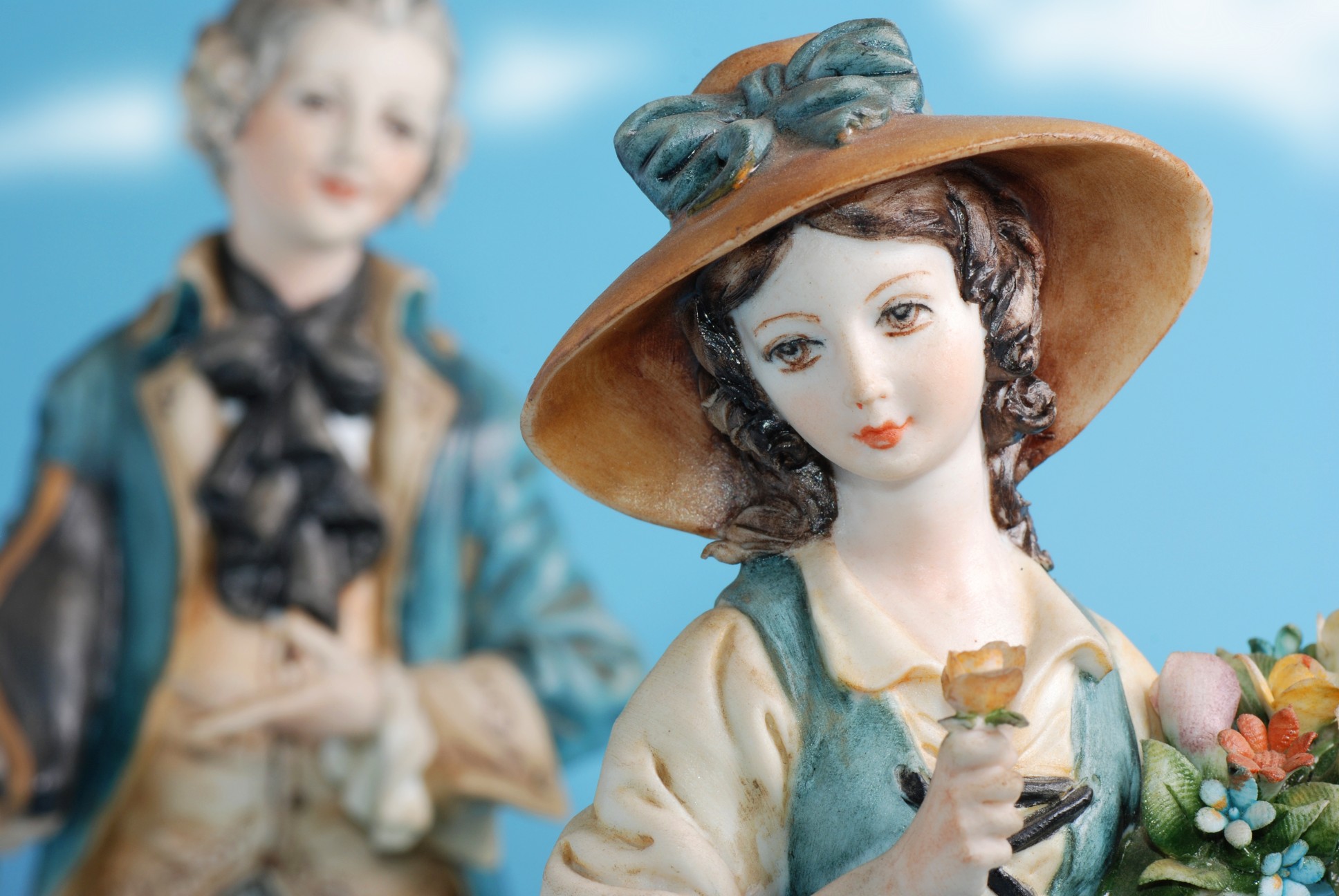Capodimonte porcelain represents a significant chapter in the history of Italian art. Dating back to the mid-18th century and known for its incredibly detailed designs, even the Louvre wanted to showcase its beauty, as demonstrated by the exhibition currently gracing its visitors, which will last until the end of the month.
Delicate figurines, ethereal flowers, and colors as diaphanous as precious gold dust: Capodimonte porcelain is all this and more. Deeply rooted in the cultural and artistic heritage of Naples, its history began in 1743 when King Charles Bourbon and his wife Maria Amalia of Saxony established a porcelain production center in their royal residence of Capodimonte: their ambition was to rival the renowned German porcelain produced by the Meissen factory. This initiative led to the creation of the Real Fabbrica of Capodimonte, which quickly gained recognition as one of the most important porcelain factories in Europe, noted for its unique and innovative techniques.
Capodimonte porcelain was distinctive due to the absence of kaolin, a key ingredient in traditional porcelain: instead, it utilized a mixture of clays from southern quarries, resulting in a tender, white-colored porcelain that differed from other European varieties. The soft-paste body of the porcelain, which was usually pure white and sometimes slightly tinged, had a lustrous glaze and was used for tableware, figures, and decorations.
When Charles III Bourbon returned to Spain, he took with him all the porcelain produced, considering these works among the most important royal manufactures; for this reason, the porcelain business in Naples faced a crisis until 1773 when Charles III’s son, Ferdinand IV, founded the Real Fabbrica Ferdinandea, attracting some of the best European artists. The period between the 1780s and the 1800s is considered the most significant in the history of Capodimonte porcelain, particularly under the guidance of Domenico Venuti, who established a renowned art school.
In the later years, after the closure of the Naples porcelain factory, Neapolitan potteries continued to produce creamware and fine glazed earthenware, similar to English Wedgwood. The first private porcelain factories in Naples were established in the second half of the 19th century, including Majello (1867), which is still active today; during this time, many copies and forgeries of early Capodimonte pieces were made by various factories around Europe, with a notable number originating from Rudolstadt, in Germany.
The most notable Capodimonte masterpiece is, perhaps, the Rococo Porcelain Room, also known as the Porcelain boudoir of Maria Amalia of Saxony. Originally conceived for the Palace of Portici between 1757 and 1759, the room was later moved to the Capodimonte Palace in Naples. The room,, measuring 6.75 x 4.8 x 5.13 meters, is adorned with three thousand pieces of porcelain, large French mirrors, and a Rocaille stucco ceiling, creating a unique and lavish atmosphere inspired by the Chinoiserie taste prevalent in the 18th century. Its development involved not only porcelain specialists but also plasterers, carvers, and gilders, with notable contributions from Mattia Gasparini for the stucco ceiling and Gennaro di Fiore for wooden carvings. The porcelain was designed by Giuseppe Gricci and crafted at the Royal Porcelain Factory of Capodimonte, with the plates made in mold on plaster forms, and the third fire pictorial decoration executed by Johann Sigmund Fischer and Luigi Restile. The Porcelain Room was initially intended for private use by Queen Maria Amalia, but she scarcely used it, as she moved to Madrid shortly after its completion. The space underwent various uses over the centuries, including as a writing and reception room. In 1866, with the transfer of Bourbon assets to the Kingdom of Italy, the porcelain cladding of the room was dismantled and moved to the Royal Palace of Capodimonte. It was then equipped with new wooden finishes and furnished with English and Neapolitan furniture from the royal collections.
But how is Capodimonte porcelain made?

Well, the production of this historical icon of our Made in Italy involves a multi-step process that starts with an artist’s vision, then transformed into a detailed sketch. After that, a gypsum model is shaped on a lathe, with intricate details carved by hand. Liquid porcelain, known for its high quality and translucency, is poured into the mold. After initial drying, excess liquid is removed to form the raw object, which is then refined to eliminate any imperfections. For floral designs, each petal is hand-shaped. The porcelain undergoes a high-temperature firing (1250 degrees Celsius) to become a biscuit porcelain object, which is then hand-painted and fired again to set the colors. This meticulous process results in the unique and highly prized Capodimonte porcelain pieces.
Caring for Capodimonte porcelain is crucial to maintaining its value and beauty: gentle cleaning with soft brushes or cloths, and avoiding harsh chemicals, is key. Safe storage away from direct sunlight and extreme temperatures is also very important, with specialists advising to check for damages regularly, too.
Today, Capodimonte porcelain is recognized for its unique design elements and quality craftsmanship, making it a sought-after collectible. The value of these pieces can vary widely depending on factors like rarity, condition, age, and the complexity of the design. Authentic, antique pieces from the original royal manufactories (under King Charles III and later under Ferdinand IV) are especially prized. These original items often feature a fleur-de-lis mark or a crown and the letter “N” signifying Naples. However, not all Capodimonte wares with the “N” and crown mark indicate a connection with the royal factory: many modern pieces produced since the 1920s also bear this logo, but their value is more in the quality of the work rather than the mark itself. As for the most expensive Capodimonte pieces ever sold, they include remarkable items like a pair of oviform vases sold for about $43,000, a porcelain piece named “Colombina and Pantalone” fetching around $60,000, and a set of teacups and saucers which sold for a similar price. One of the highest-valued pieces is a Capodimonte teapot and cover, which was sold for about $163,000.




























